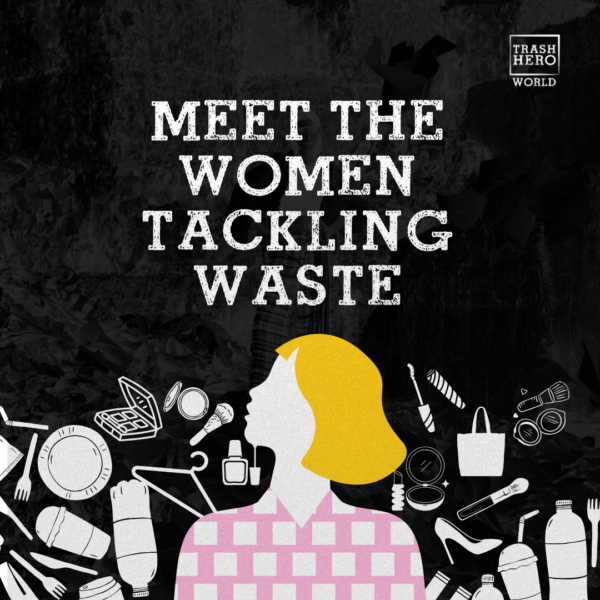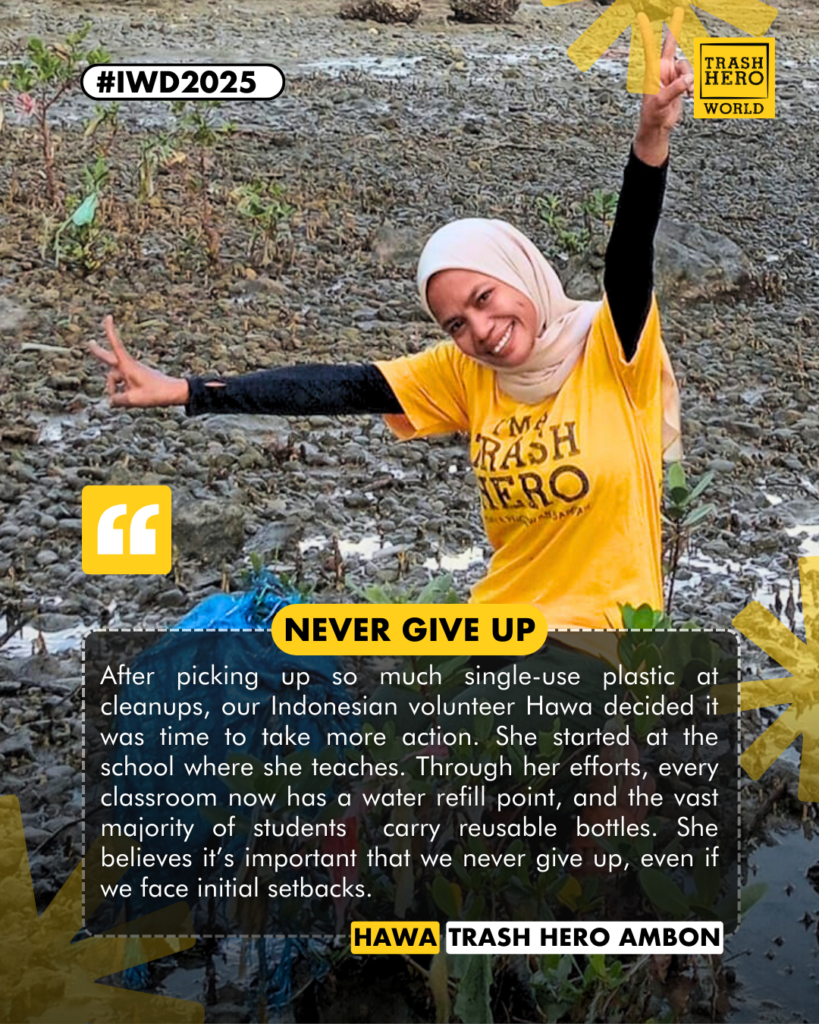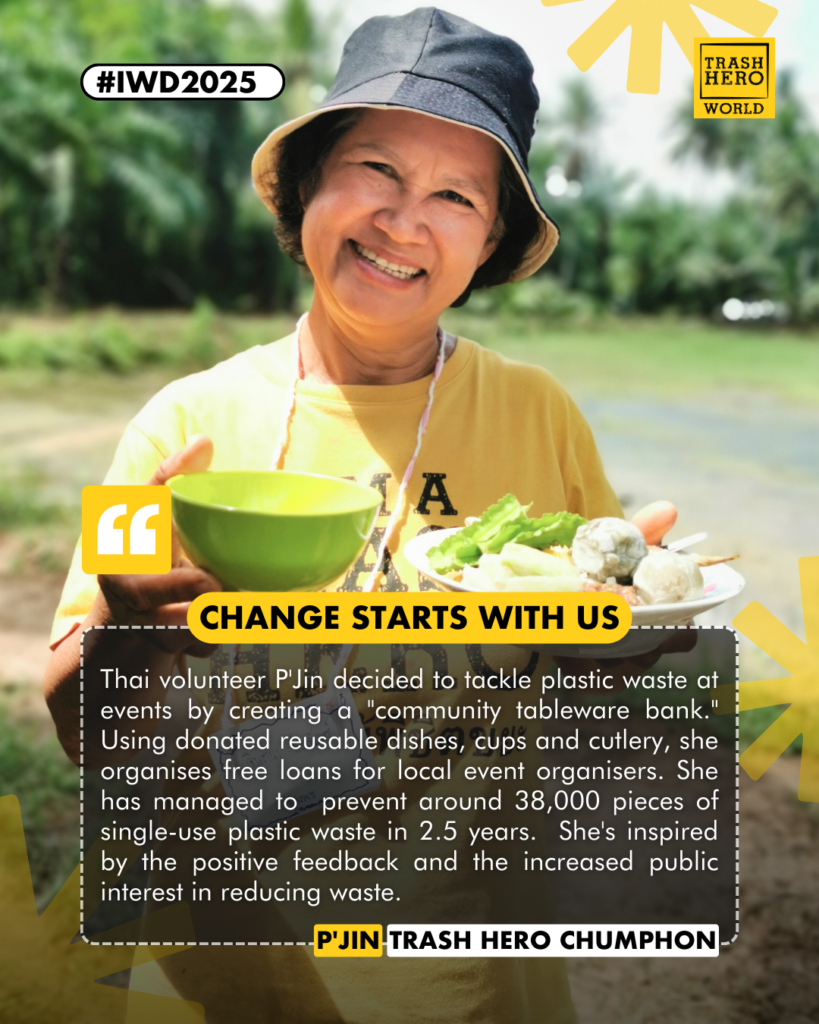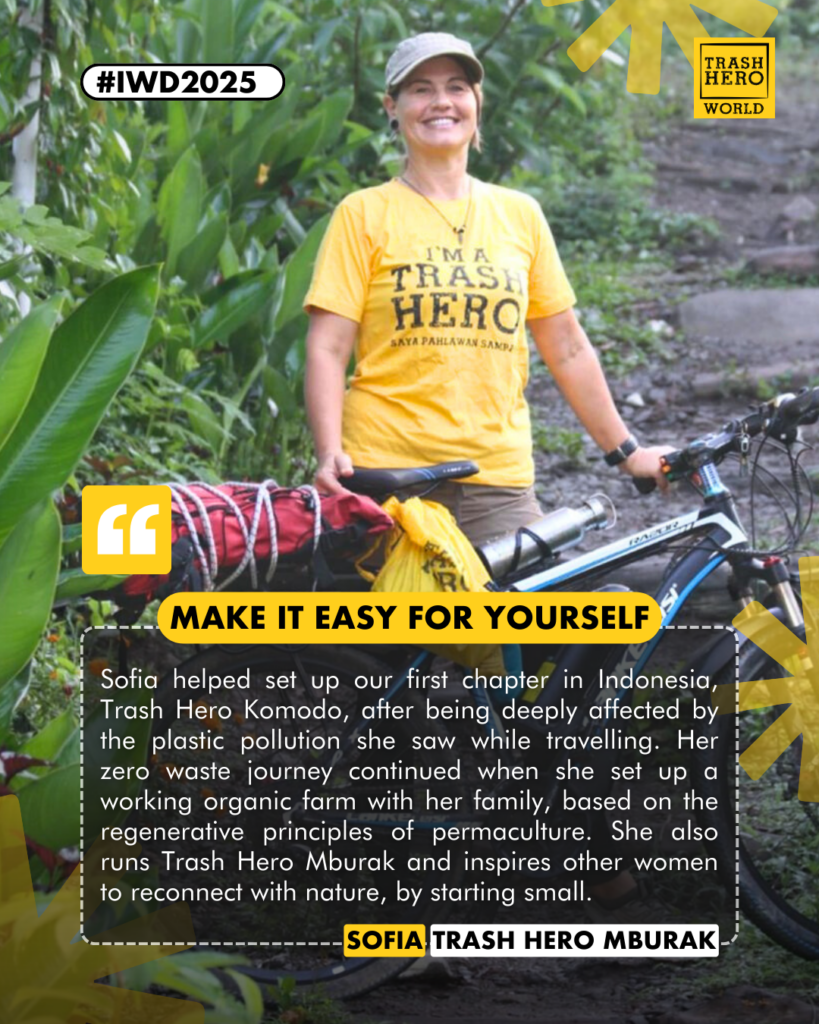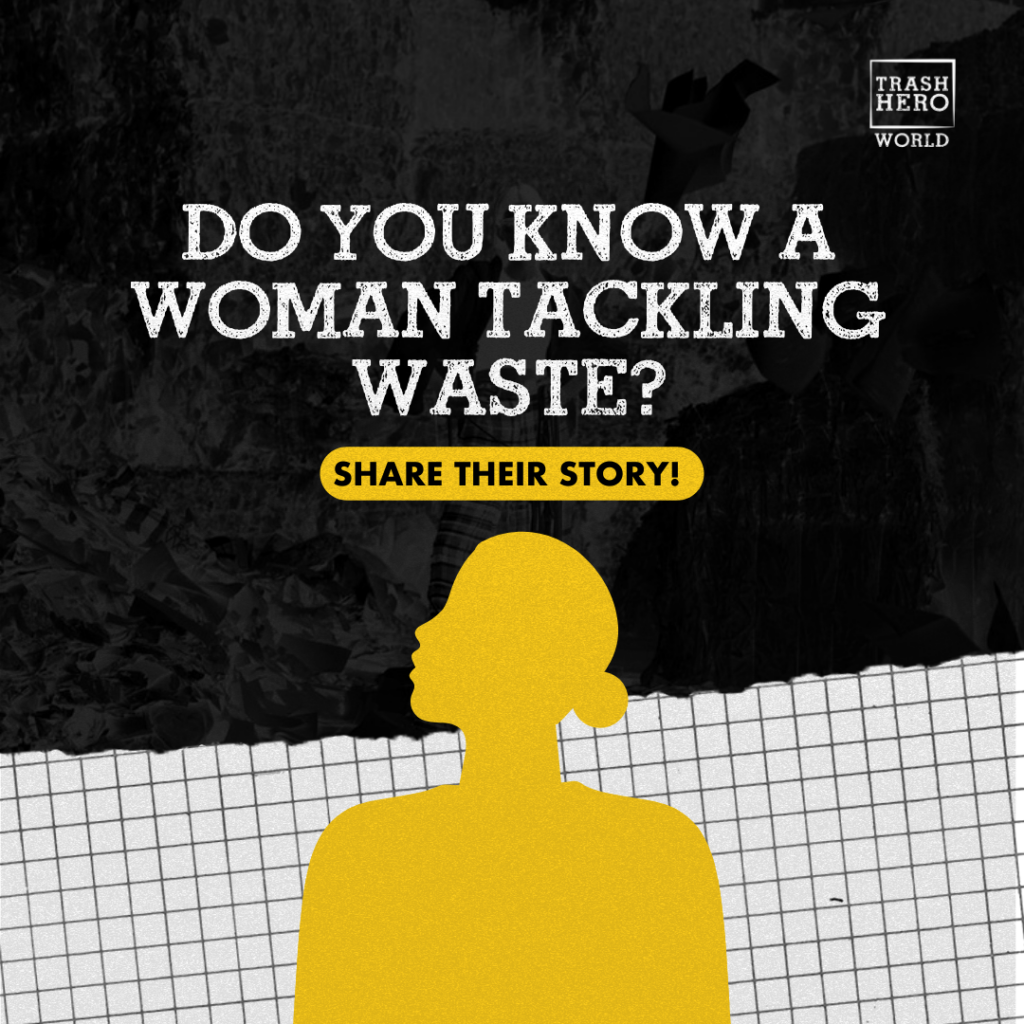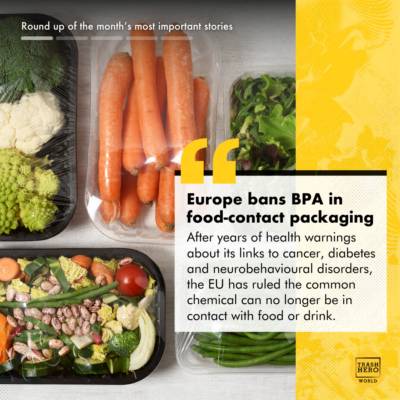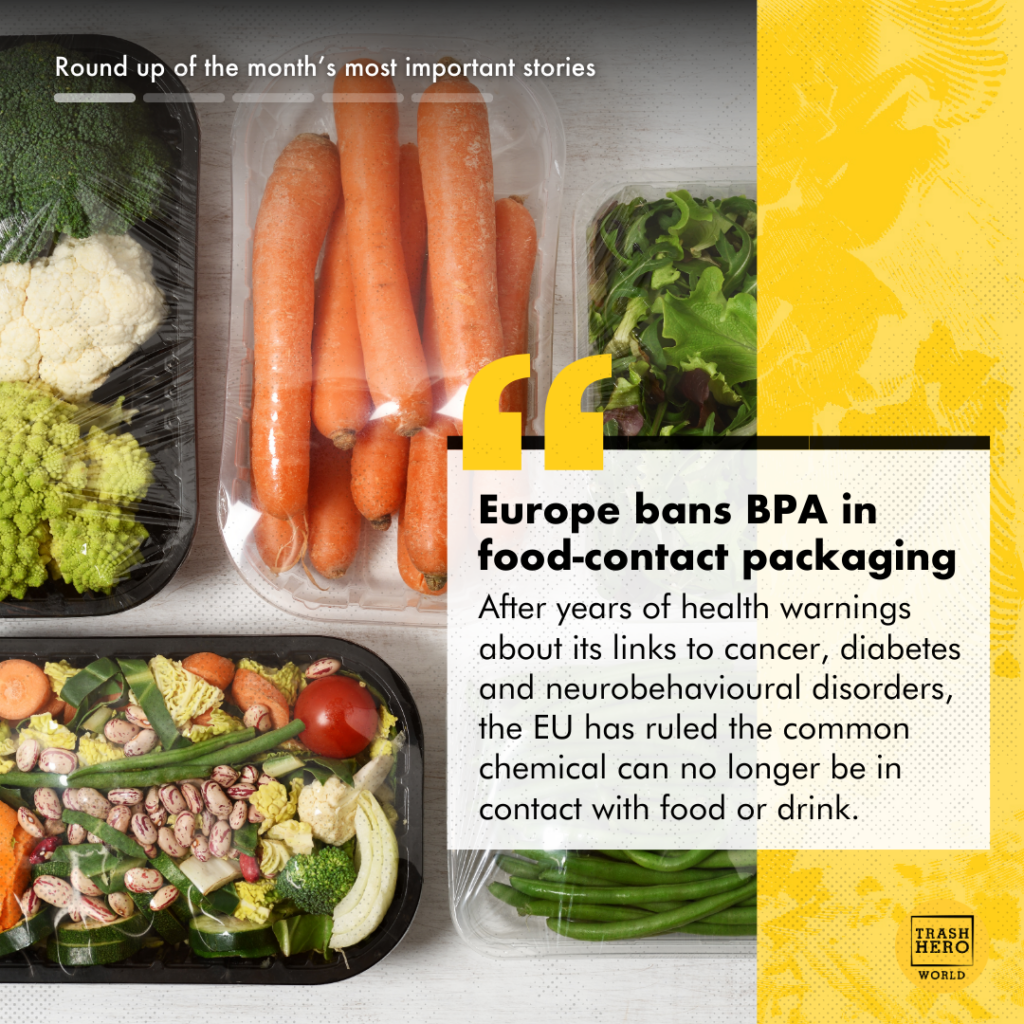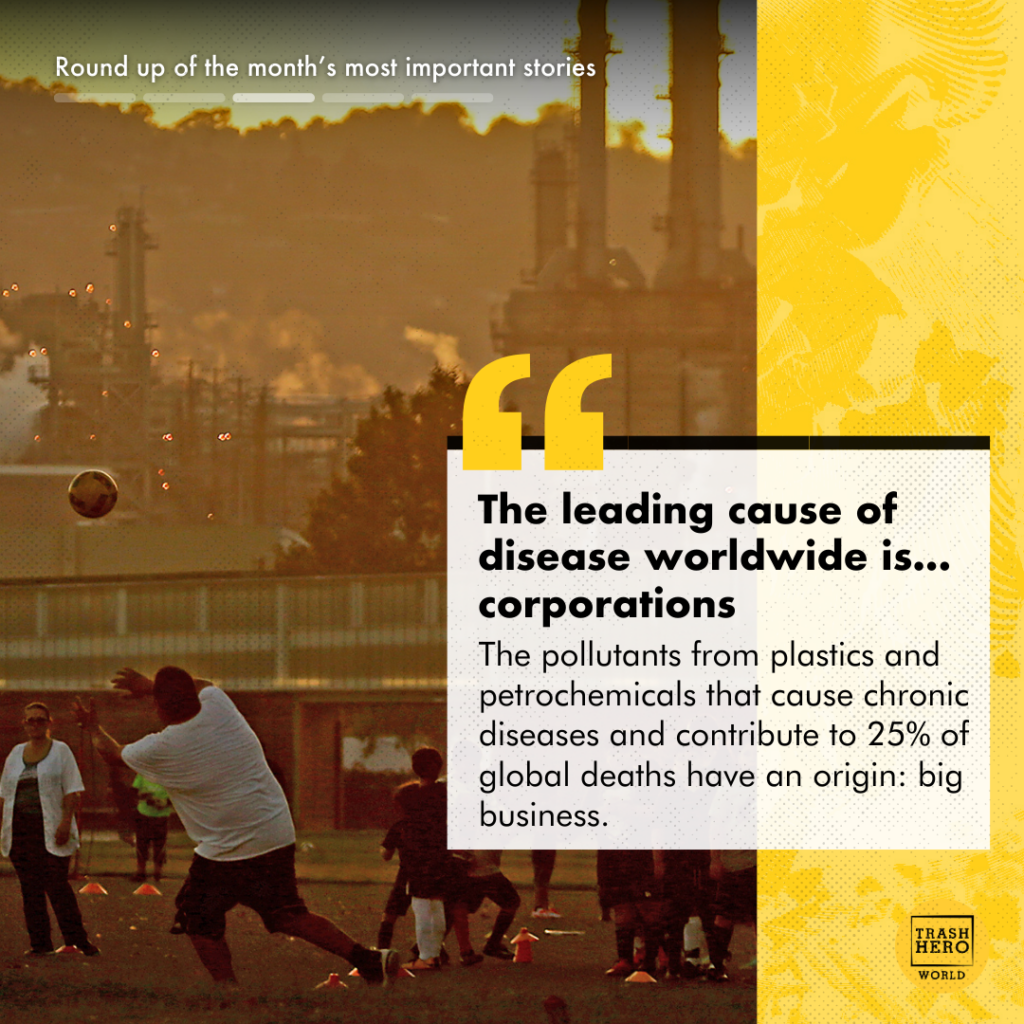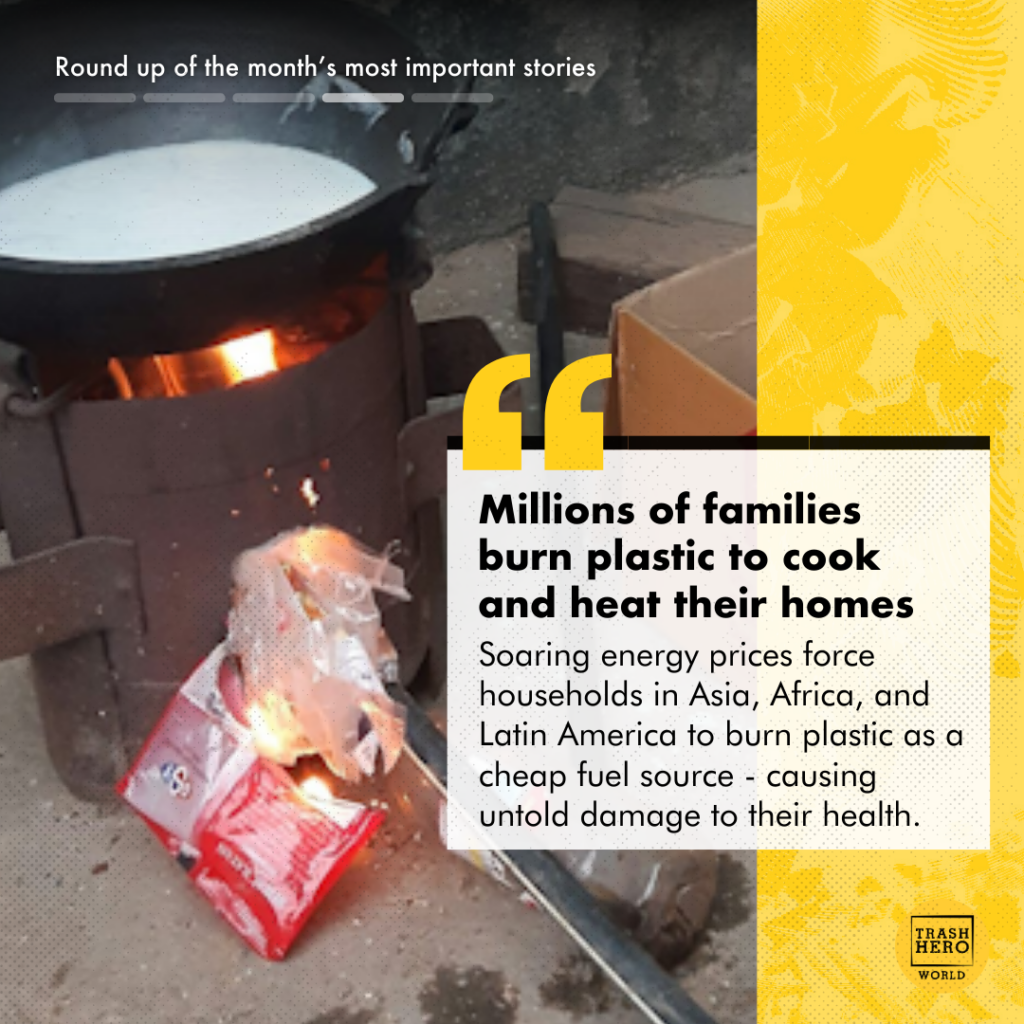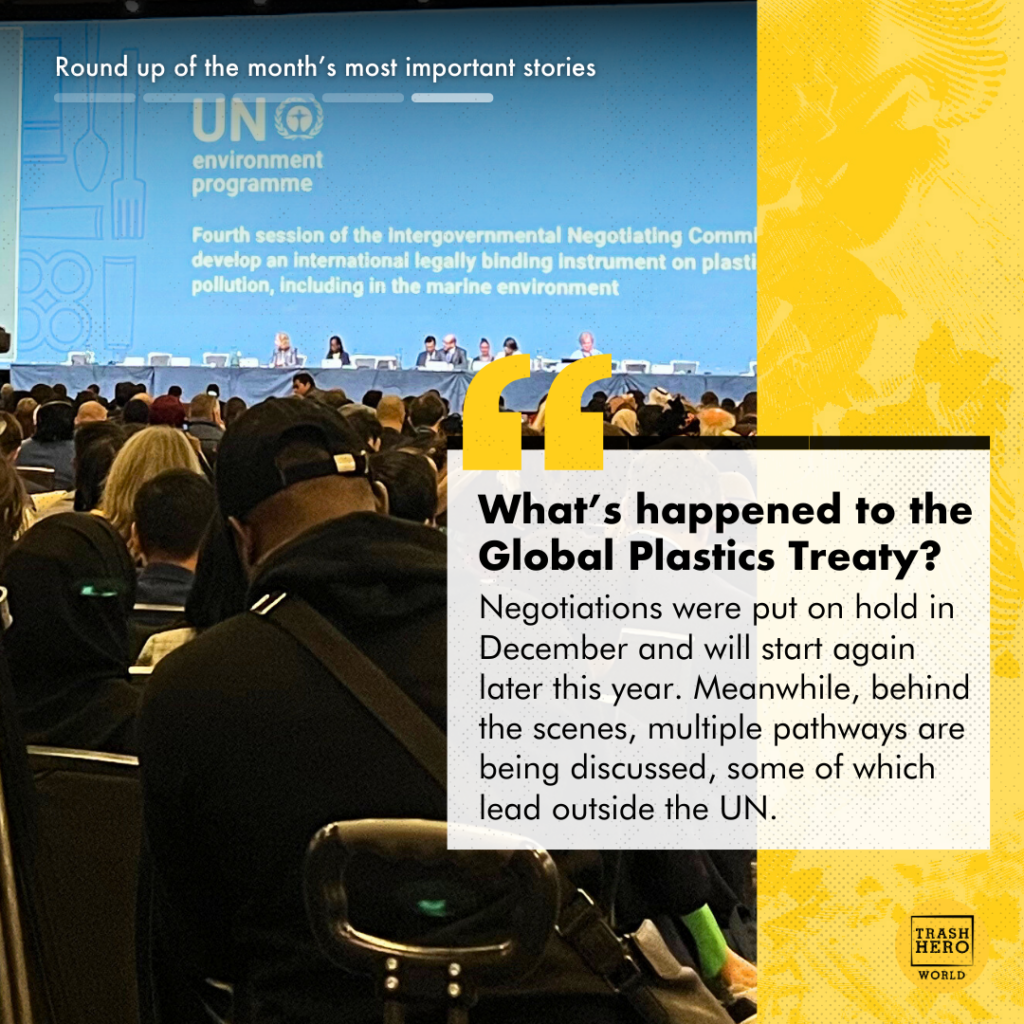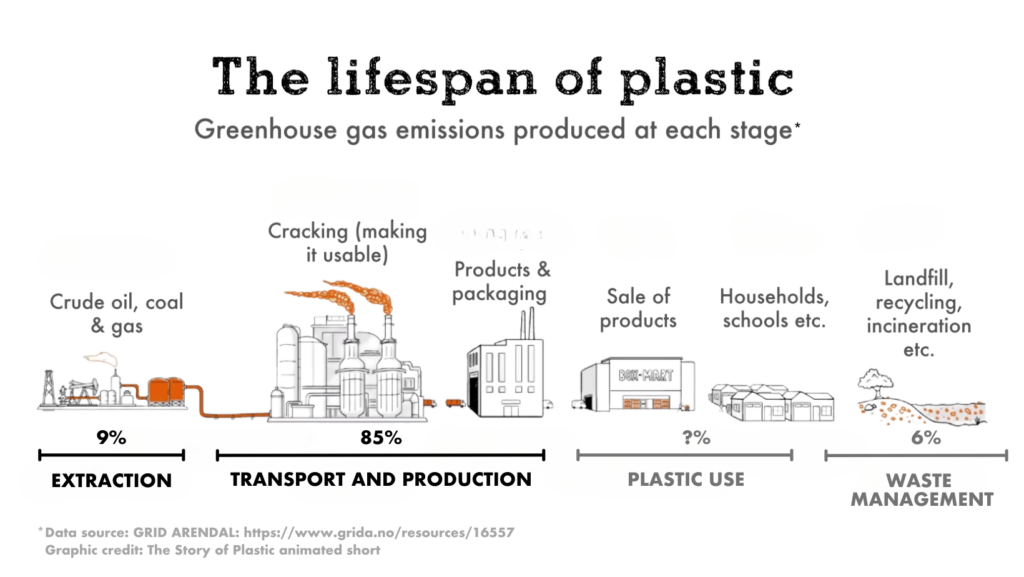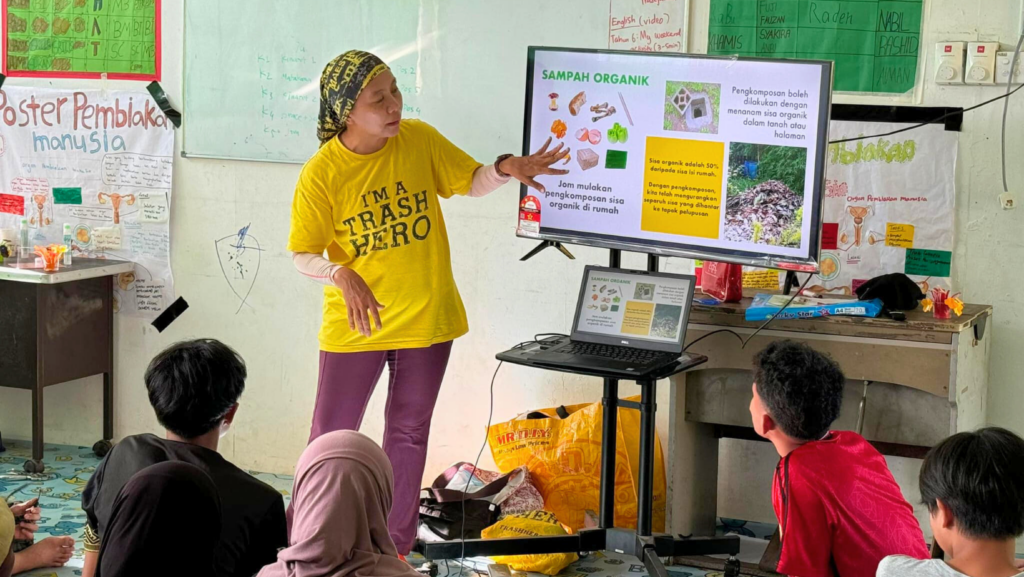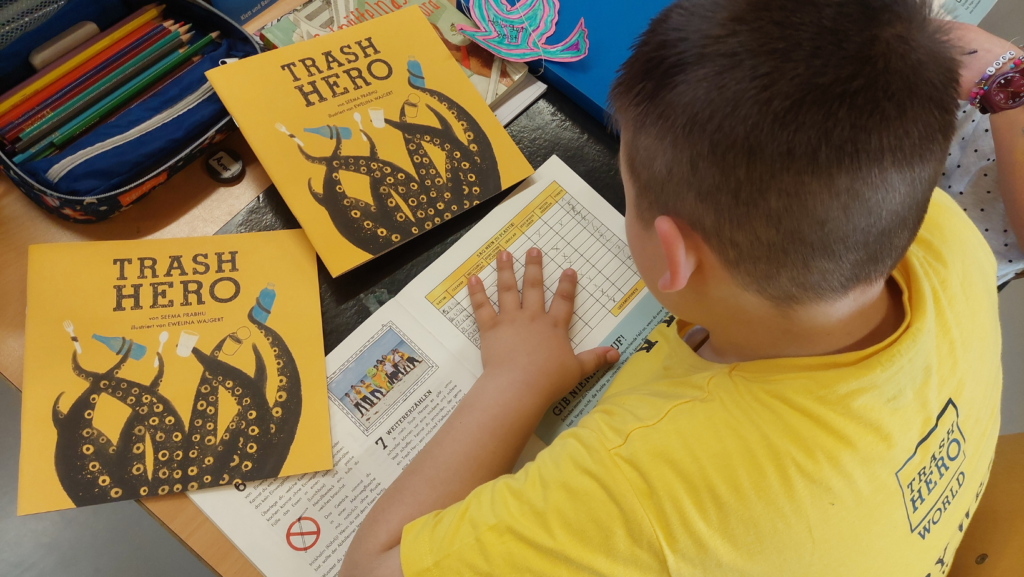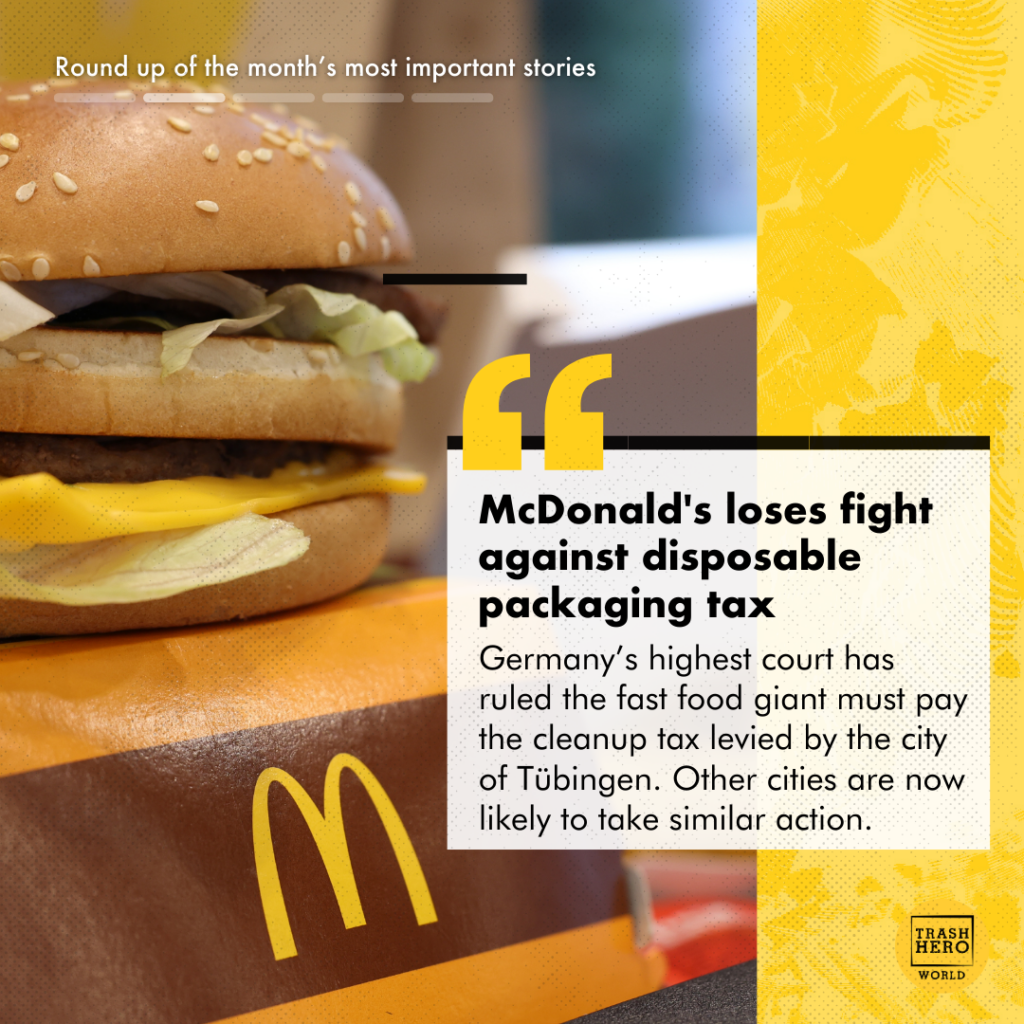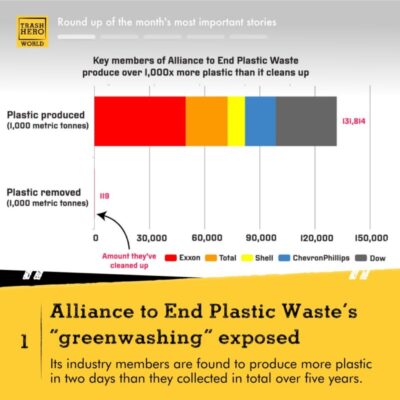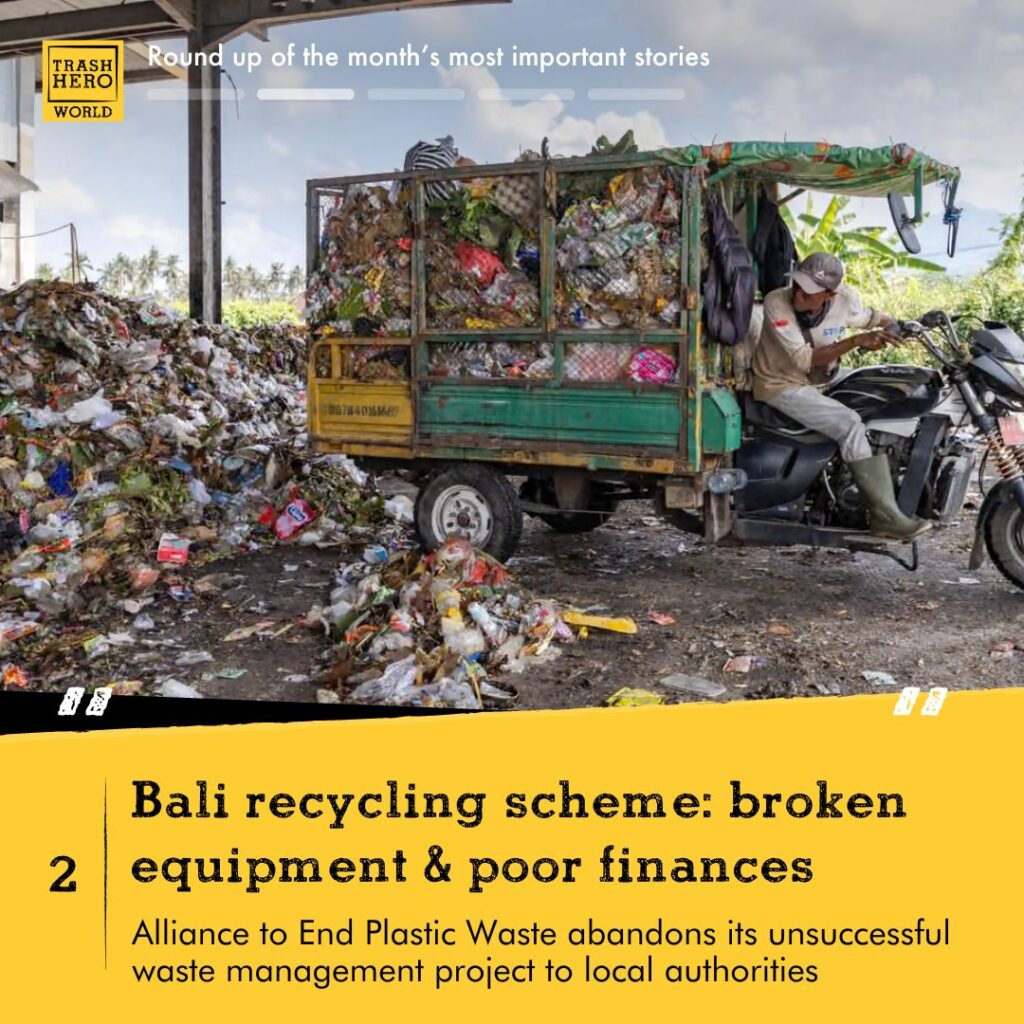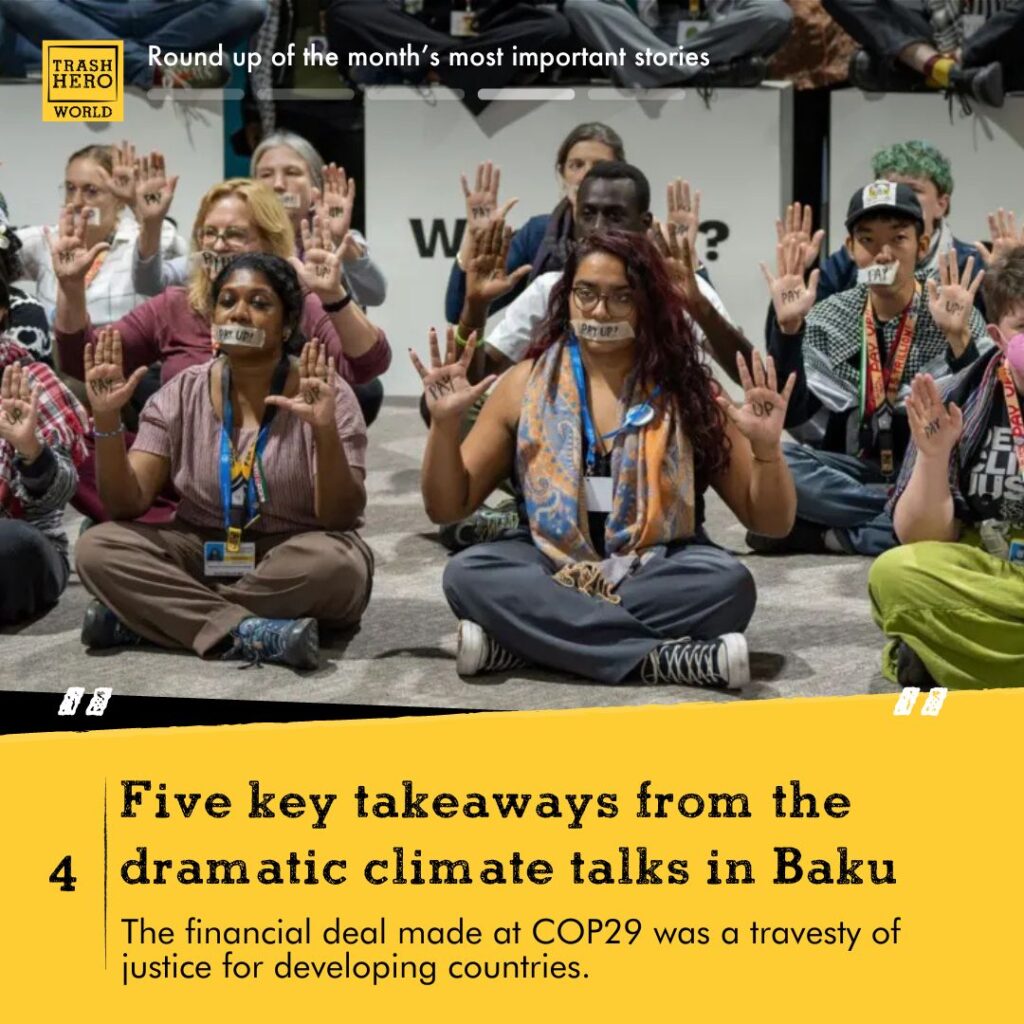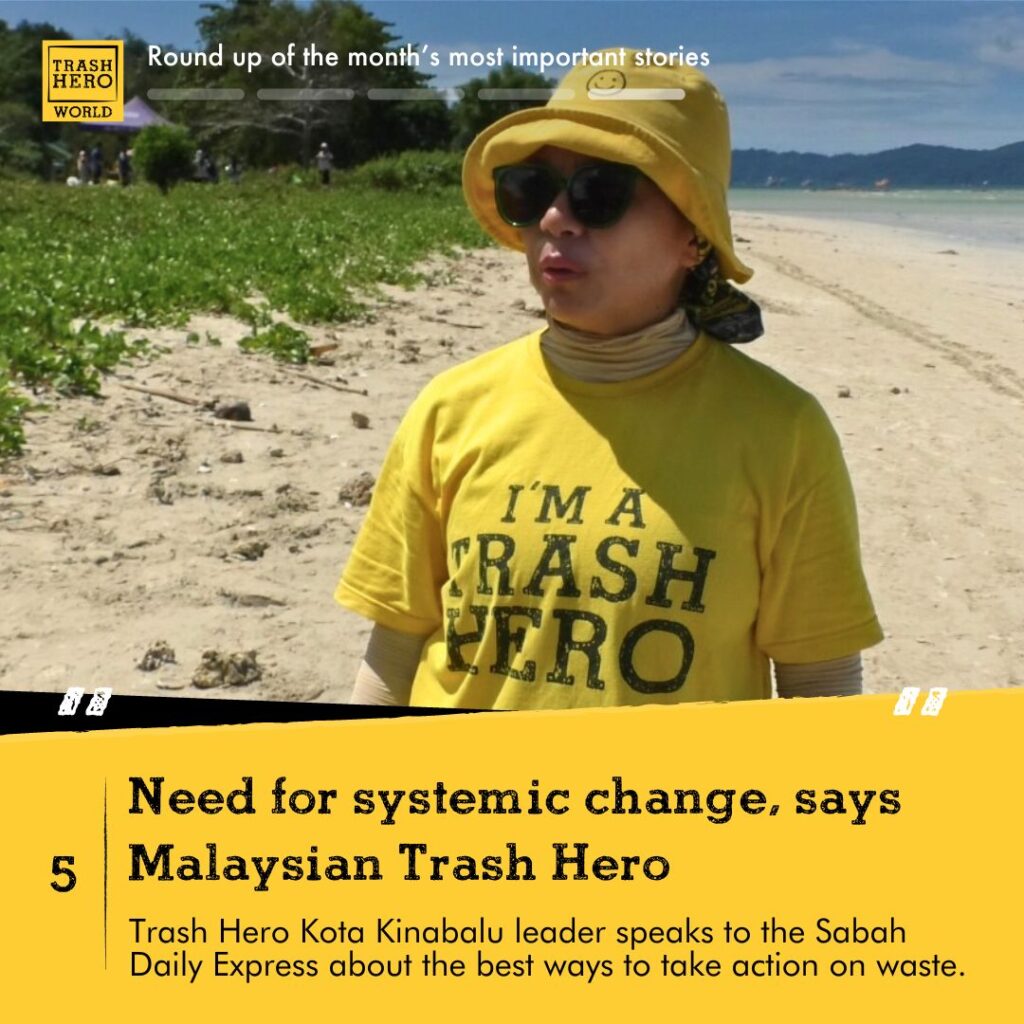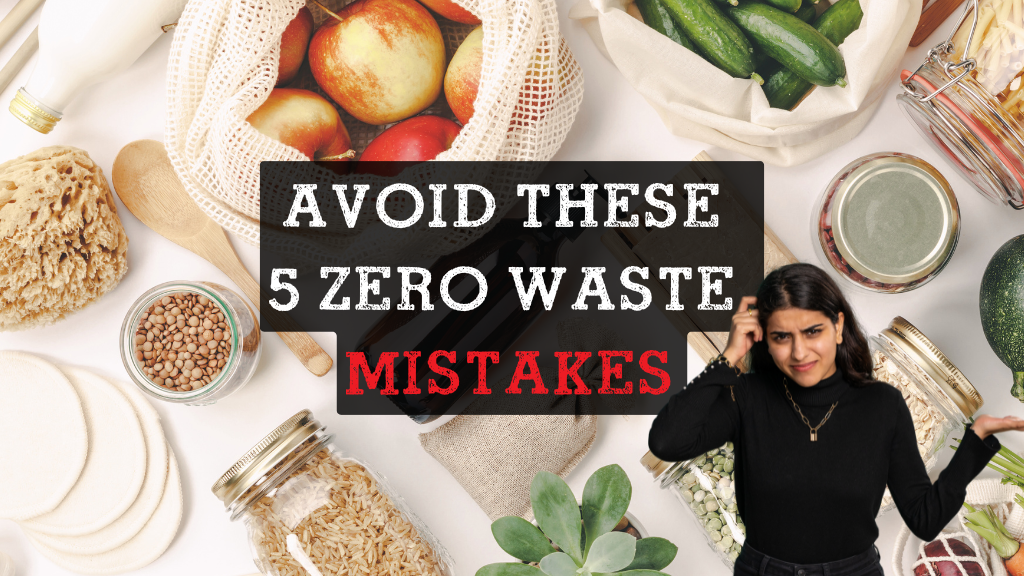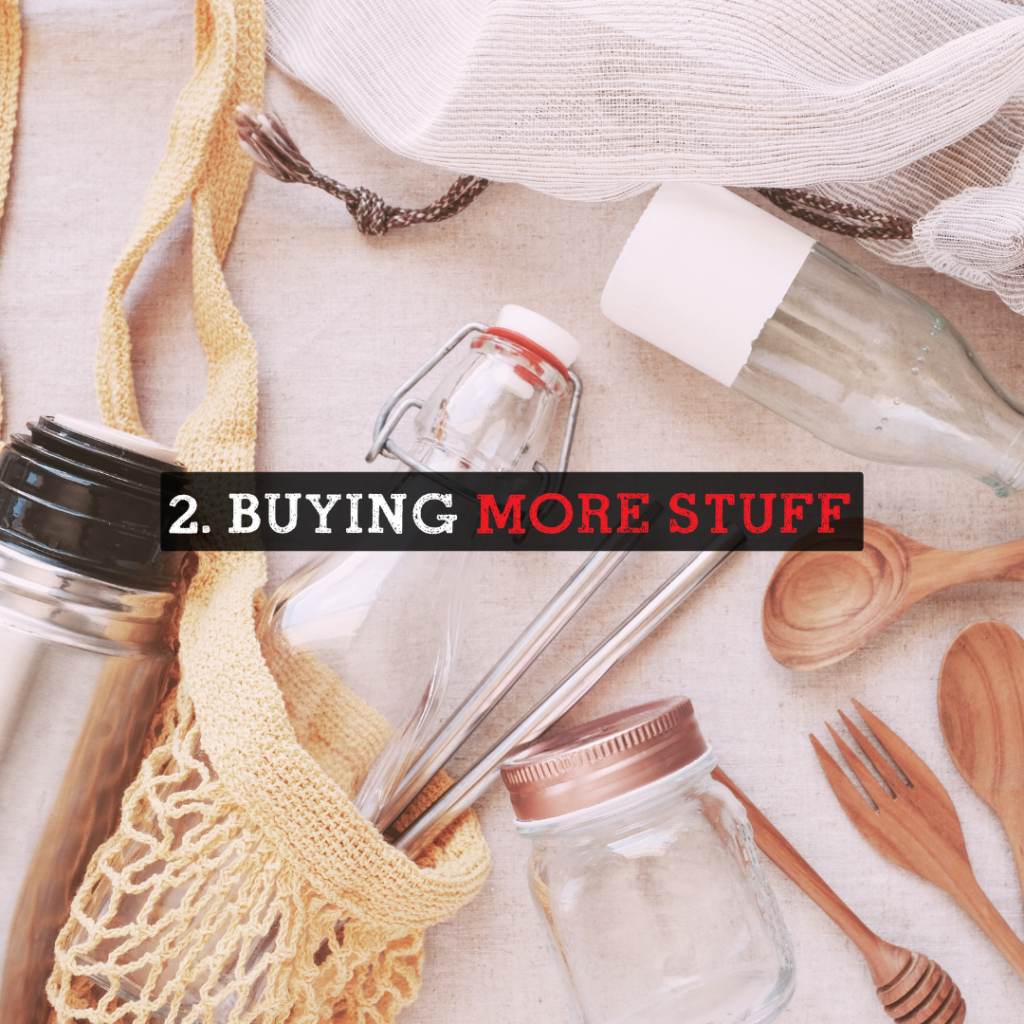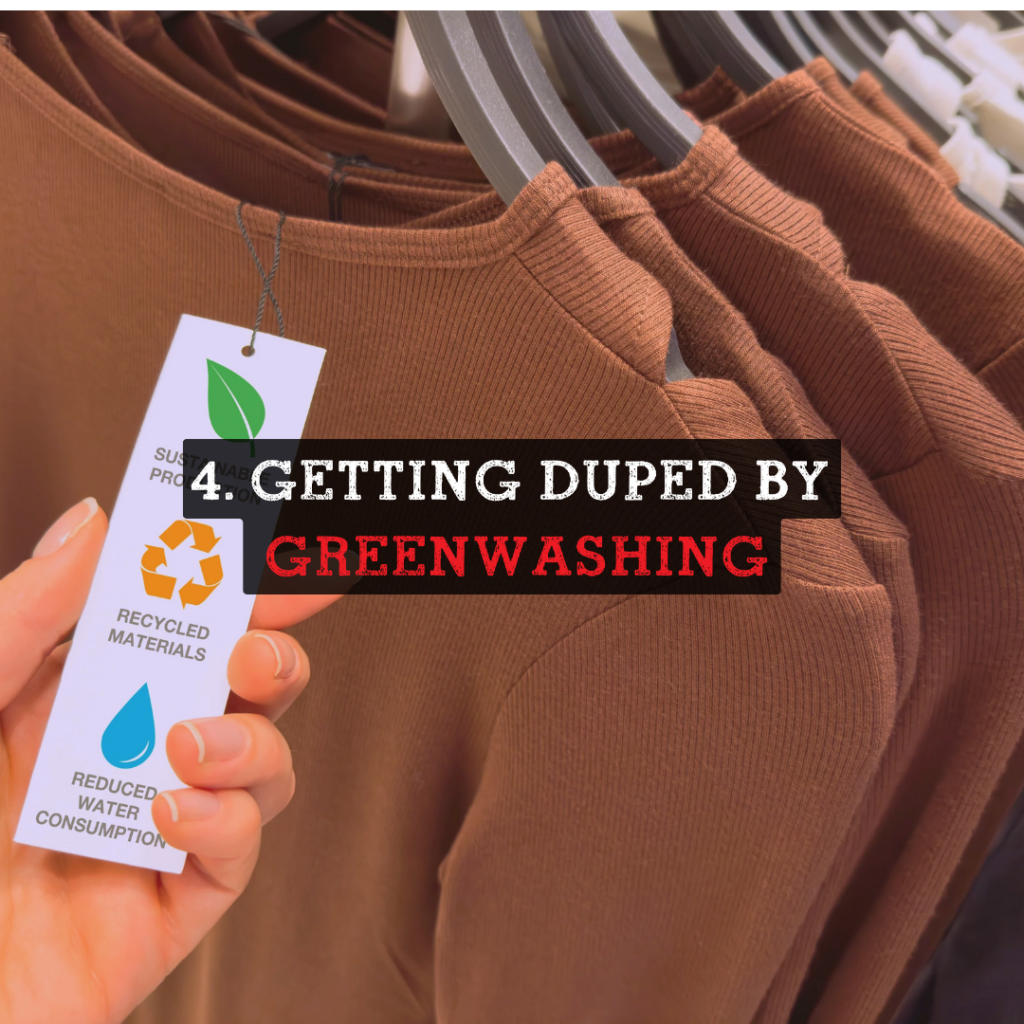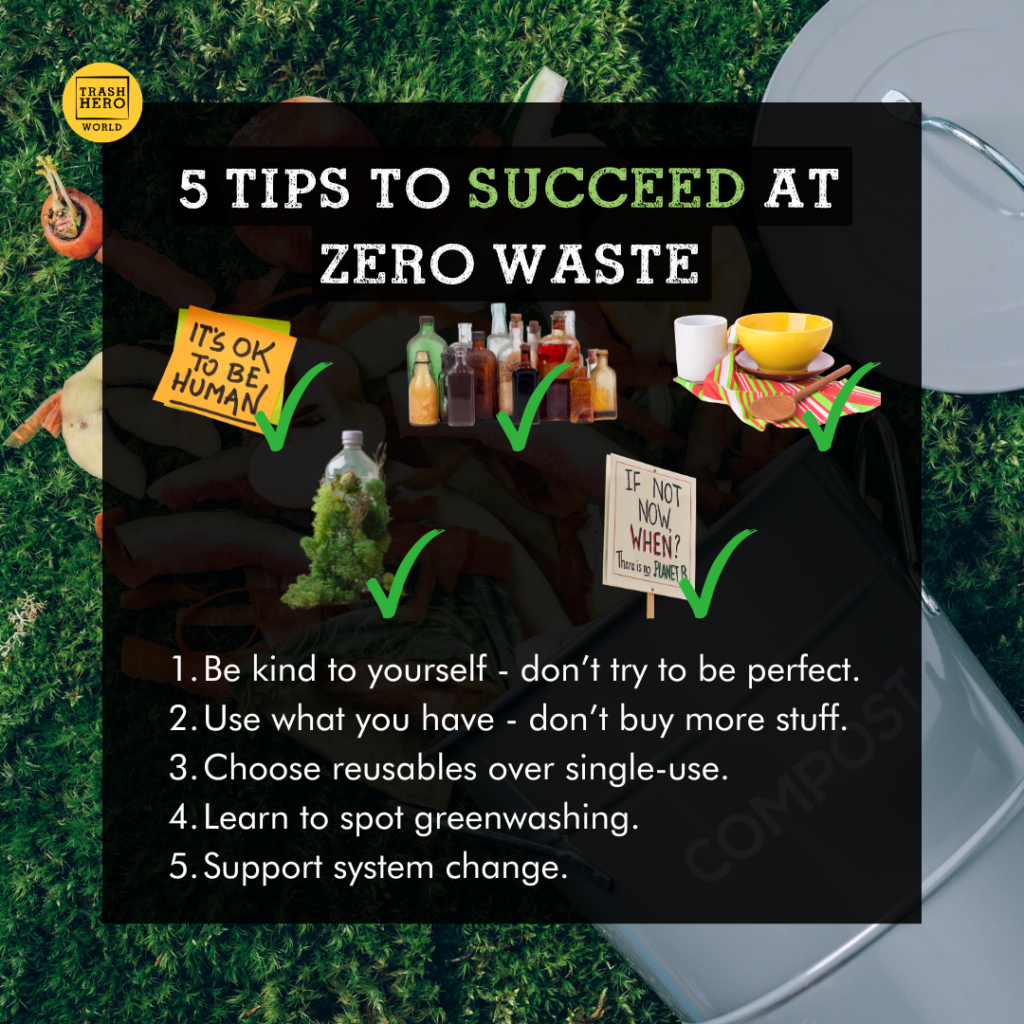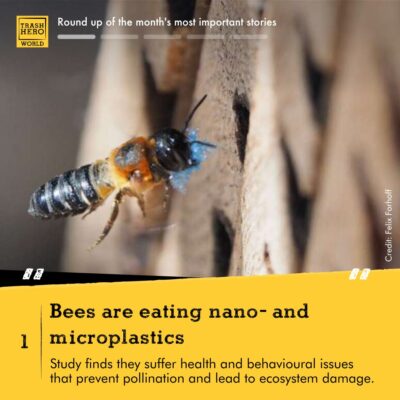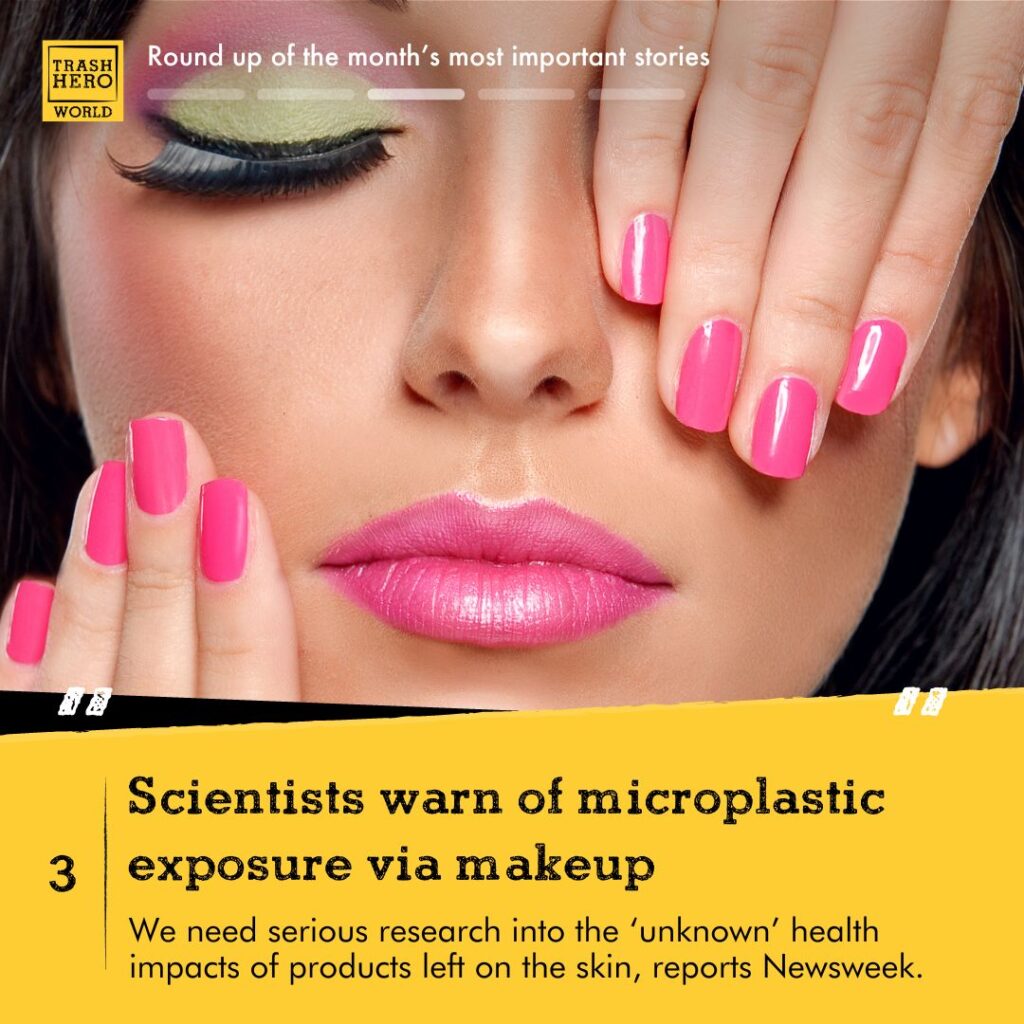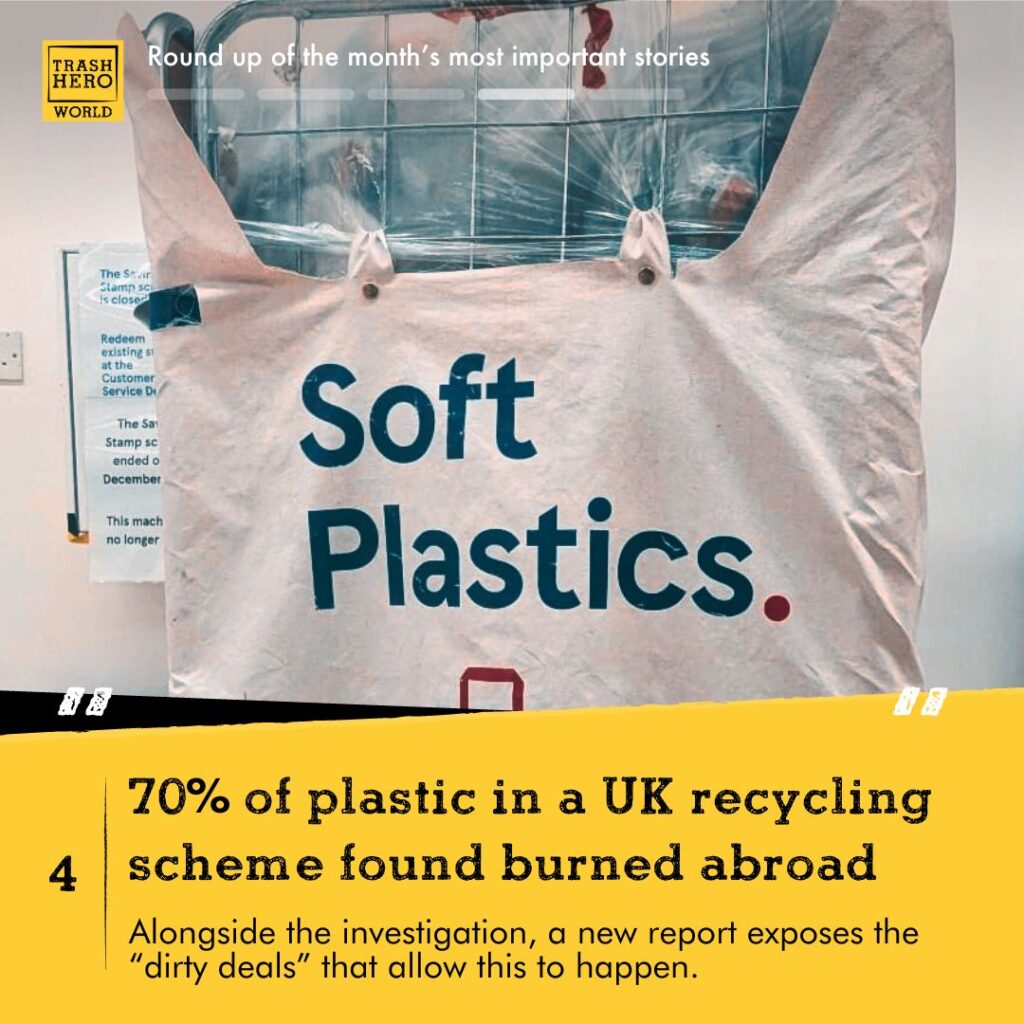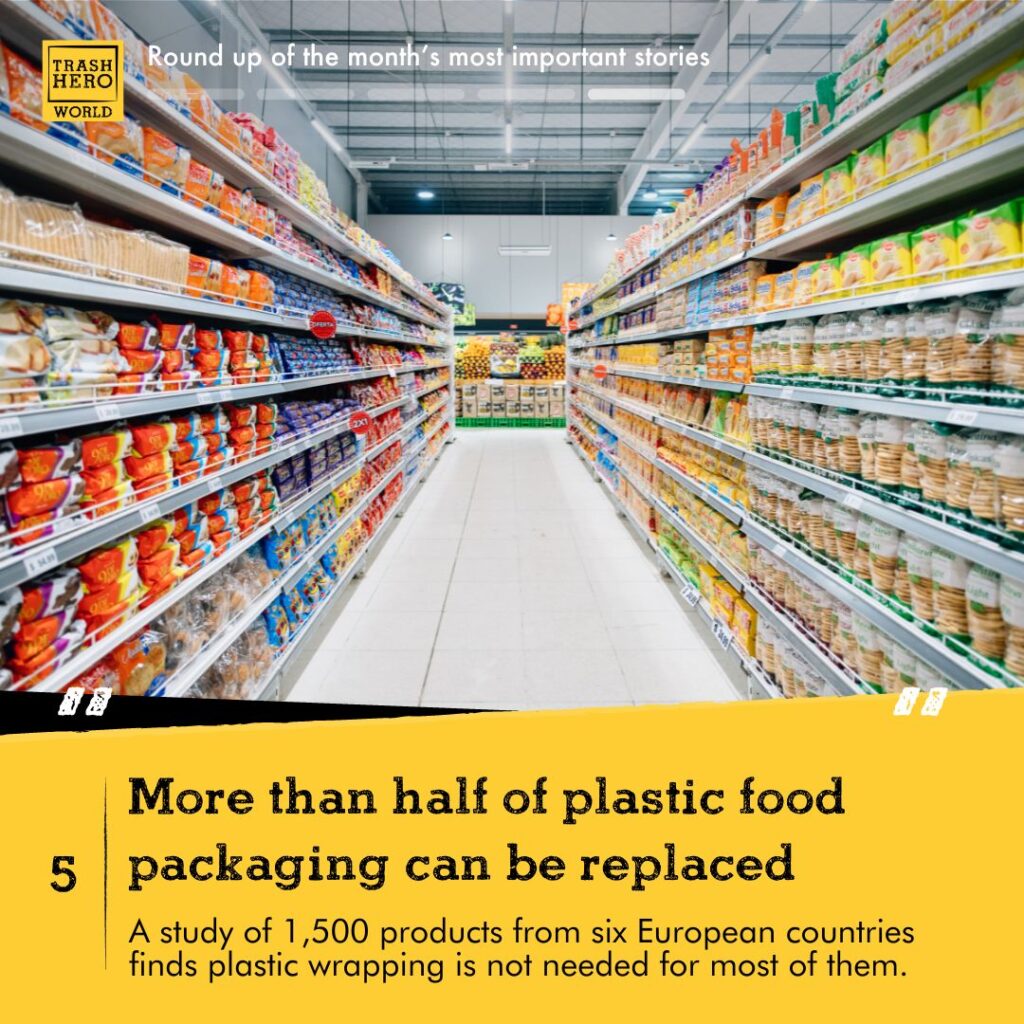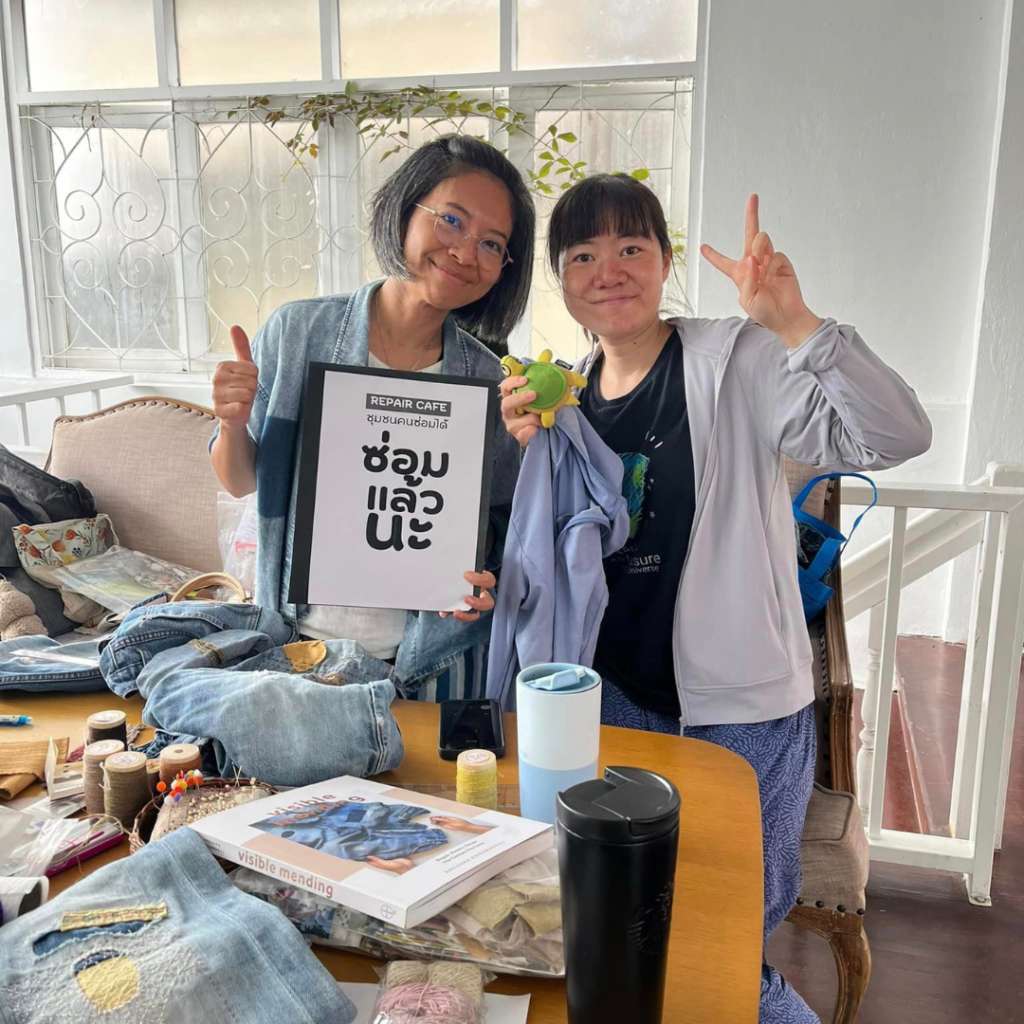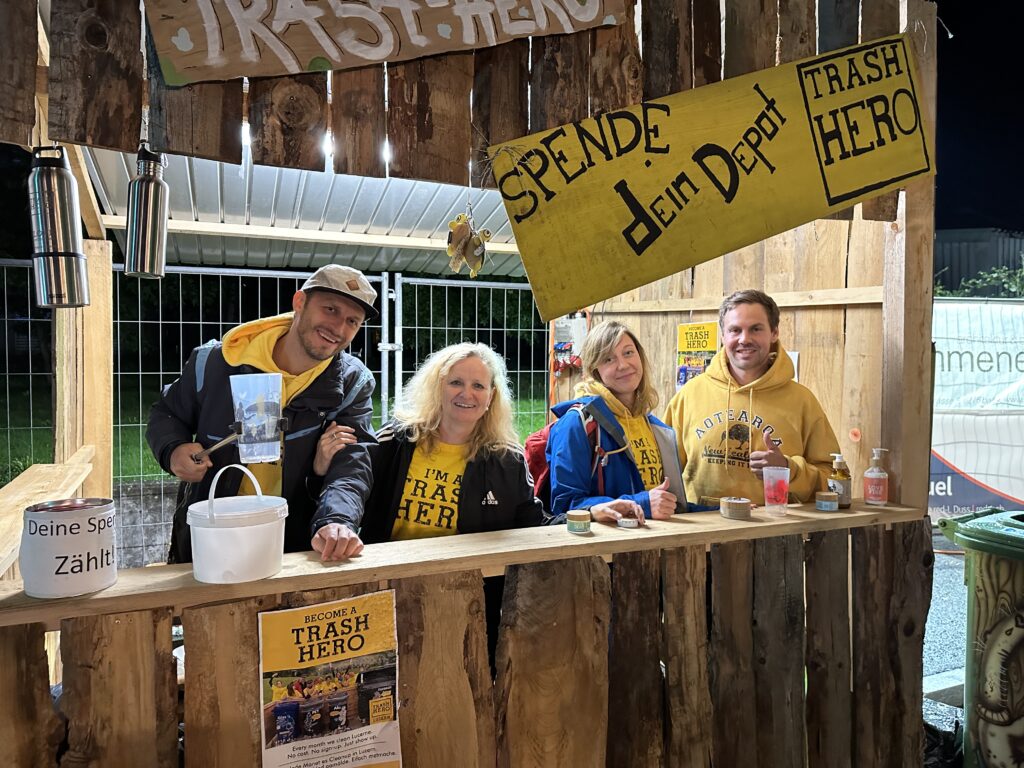Women make up a huge part of the Trash Hero movement, as both volunteers and staff. This International Women’s Day, we are highlighting some of our female leaders who are tackling waste around the world and inspiring others to do the same.
Isabelle, Trash Hero Damansara
Malaysia
When Isabelle, a young volunteer from Kuala Lumpur, Malaysia, grew tired of watching plastic waste pile up in her neighbourhood, she felt it was time to stop talking and start doing. She discovered Trash Hero through an online search and found our proactive ethos resonated with her own.
She decided to start her own Trash Hero chapter and mobilise her fellow students to join her in tackling plastic pollution. In just a few months (August 2024 – Feb 2025), Trash Hero Damansara has organised seven cleanups with 71 volunteers, the majority of whom were under 16.
Her age is far from being a limitation: Isabelle has used her existing school network to encourage other young people to join the movement, inviting student clubs such as the SKISS Leo Club and HELP Interact Club to join the cleanups.
“Be the first to step up”
Isabelle believes that even small actions, like using reusable bags and water bottles, make a positive difference. She wants to inspire others and change their mindset. Later this year she will give a presentation at her school about reducing waste.
Her family and friends have been very supportive and she feels her experience as a Trash Hero has been valuable for her own personal growth. She remains a firm believer in taking concrete action: ”instead of waiting for others to make the first move, be the first to step up!”
Follow Trash Hero Damansara on Instagram
Hawa, Trash Hero Ambon
Indonesia
After volunteering with Trash Hero Ambon, Hawa, a teacher in Layeni Village in Ambon, became a champion of waste reduction. She says witnessing first hand the impacts of plastic pollution at the cleanups made her determined to do something about it.
She and her friends began educating local youth through their community outreach programmes, focusing on the danger of single-use plastic. At first this was challenging: although they had support from the local government, their messages were met with resistance. Changing behaviour with advocacy alone is not easy.
Then, seeing an opportunity for change at her school, Hawa built upon an existing initiative encouraging teachers to bring reusable bottles. She convinced the administration to make water refill stations available in every classroom, enabling the change she wanted to see. Now the teachers and most students bring reusable water bottles to school, instead of buying water in single-use plastic.
“Never giver up”
Hawa took practical steps to foster a school-wide culture of refill and plastic waste prevention. Her advice to other women is, “Never give up. The environment is like an old house that must be kept beautiful and pristine.
Follow Trash Hero Ambon on Facebook.
P’Jin, Trash Hero Chumphon
Thailand
Jintana Cheunjan (P’Jin) started volunteering with Trash Hero Chumphon around seven years ago. She has always loved nature, especially the sea. As a Trash Hero volunteer, she found she was always invited to events to help people manage and sort their trash. She quickly realised that this would be a never-ending job unless we stopped creating the waste in the first place.
She wanted to offer event organisers her collection of reusable bowls, cups, and cutlery as a substitute for the single-use foam and plastic they typically provided. However, she soon realised this wasn’t an easy option because her items weren’t a matching set, making them easily lost or misplaced.
“Change starts with us”
At an event with the local Lions Club, she mentioned the issue to the organisers, and they decided to donate a full set of cooking pots, utensils, plates, cups, and cutlery to Trash Hero Chumphon. For the last four years, she has been lending the set free of charge to various events in their local area, from government workshops to religious festivals.
After a while, she started keeping a log of all the events that have used her “community tableware bank” and estimates they have been able to avoid almost 38,000 pieces of single-use plastic over the past 2.5 years.
They have also received good feedback for their efforts. P’Jin says most people are happy to have the option to reduce waste rather than deal with it later. It also makes her happy to see that more zero-waste events are happening and that she is setting a good example to those around her. She is especially inspired to see the change in kids at school events they host. She tells them that every day they don’t create waste, they should feel proud of themselves.
Follow Trash Hero Chumphon on Facebook
Sofia, Trash Hero Komodo & Mburak
Indonesia
In 2008, Sofia took a trip through Southeast Asia. It was the first time she had seen pristine beaches blanketed in plastic pollution. Later, a powerful documentary about waste made clear the global scale of the problem and she felt compelled to act.
She started small, making changes in her everyday life, such as switching to reusable bags and water bottles and encouraging others to do the same. She then helped to set up Trash Hero Komodo – our first chapter in Indonesia – and later Trash Hero Mburak, organising hundreds of community cleanups and education events.
Then the discovery of permaculture profoundly reshaped her thinking. One thing in particular resonated with her: the idea that “we all need to give more than we take – or at least the same.” In other words, being “sustainable” is not enough, we need to regenerate.
“We all need to give more than we take – or at least the same.”
After further training, Sofia and her family committed to this idea full time. They slowly expanded their home vegetable garden into the Nepa Organic Farm, cultivating local fruits, herbs and vegetables. They are now able to meet their own needs and those of their one worker and his family. Surplus is sold to a few restaurants in nearby Labuan Bajo.
The farm operates without synthetic pesticides and fertilisers. No plastic packaging is used and food transportation is minimal, reducing pollution. For Sofia, the farm embodies her commitment to waste reduction and living in harmony with nature.
The journey to get here has not been easy, but she is determined to continue and wants to encourage other women to try zero waste living. For those starting out, she says it is important to look beyond obvious areas of consumption, to things like menstrual health, which involves a lot of toxic single-use plastic. It’s all about creating “new habits and making it easy for yourself”, she says.
Follow Trash Hero Komodo and Trash Hero Mburak and Facebook.
read more







